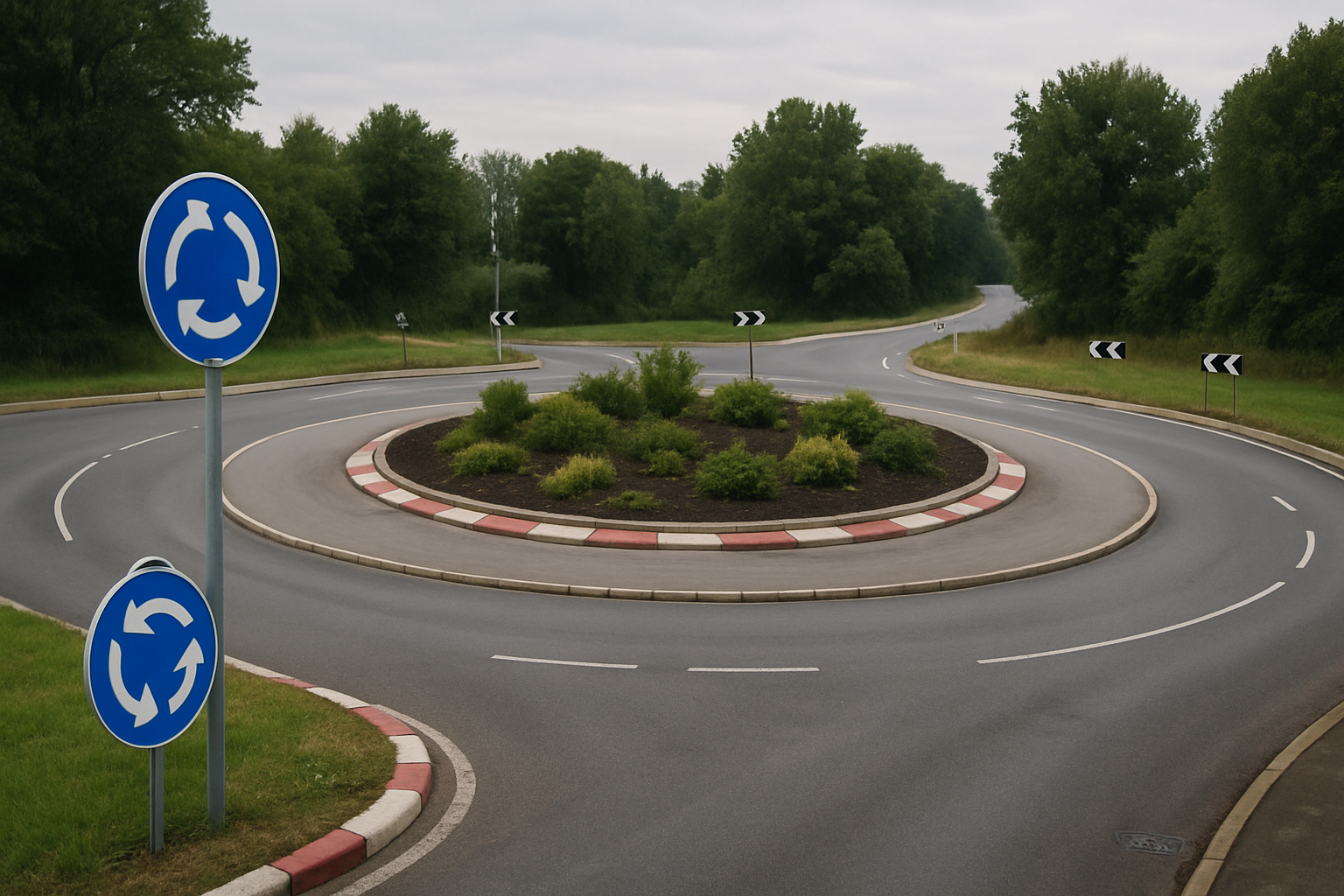Roundabouts are becoming an increasingly common feature on U.S. roads, praised for improving traffic flow and reducing severe collisions. Yet many drivers feel uncertain when approaching these circular intersections. In this roundabout navigation guide, we’ll cover everything from right‐of‐way rules to lane selection, ensuring your driving roundabouts experience is smooth, safe, and stress‑free.
1. Why Roundabouts Improve Intersection Safety
Traditional signalized intersections present multiple conflict points where vehicles cross paths, leading to T‑bone and head‑on crashes. By contrast, modern roundabouts:
- Reduce conflict points by up to 75% compared to four‑way stops or lights.
- Force drivers to slow to 15–20 mph, lowering the risk and severity of collisions.
- Keep traffic moving continuously, cutting idle time and emissions.
Understanding these benefits will help you embrace intersection safety and approach roundabouts with the right mindset.
2. Approaching the Roundabout
Proper roundabout navigation begins well before you enter the circular roadway:
2.1 Observe the Signs and Road Markings
- Yield lines: White triangles painted on pavement indicate where to give way.
- Lane arrows: Overhead or road‑surface arrows show which lanes serve which exits.
- Advance warning signs: Circular yellow signs and “Roundabout Ahead” posts alert you to slow down.
2.2 Choose the Correct Lane
Multi‑lane roundabouts require attention to lane selection:
- Rightmost lane: Generally for first exits (right turn) or going straight.
- Left lane: For straight, left turns, or U‑turns—depending on posted signs.
- Center or middle lanes: May serve multiple exits; follow pavement markings carefully.
If in doubt, stay in the rightmost lane and use the first exit—this is the safest option for unfamiliar roundabouts.
3. Entering and Circulating
Once you’ve positioned correctly, focus on smooth entry and continuous flow:
3.1 Yield to Traffic in the Circle
Always yield to vehicles already in the roundabout. Wait for a safe gap—there is no signal, so this driving roundabouts step is crucial for preventing collisions.
3.2 Maintain a Steady Speed
- Aim for 15–20 mph unless posted otherwise.
- Avoid sudden acceleration or braking inside the circle.
- Keep an eye on other vehicles—especially larger trucks that require extra space.
3.3 Stay in Your Lane
Do not change lanes within the roundabout. If you miss your exit, continue around again—never cut across lanes.
4. Exiting the Roundabout
Safe exits depend on clear signaling and lane discipline:
4.1 Signal Early
Once past the exit before yours, use your right turn signal to indicate you will be leaving the circle. This alerts drivers behind you and those in adjacent lanes.
4.2 Watch for Pedestrians and Bicyclists
Crosswalks often sit just beyond the exit. Reduce speed and yield to any pedestrians or cyclists crossing your path.
4.3 Merge Smoothly
Check your mirrors and blind spots before merging onto the exit road. Avoid drifting wide or swinging back, as this could catch other drivers off guard.
5. Special Situations and Tips
5.1 Emergency Vehicles
If you hear sirens, do not stop in the circle. Continue to your exit, then pull over safely to let emergency responders through.
5.2 Large Vehicles
Buses and trucks may use the truck apron (raised pavement) in the center. Give them extra space and avoid following too closely.
5.3 Winter Conditions
On icy roads, approach slowly and yield generously—icy surfaces can extend stopping distances dramatically. Use gentle inputs to maintain control.
Conclusion
By mastering these roundabout navigation strategies—observing signs, choosing the right lane, yielding properly, and signaling clearly—you’ll navigate U.S. roundabouts with confidence and uphold intersection safety. Remember: slow down, stay alert, and respect the flow of traffic. With practice, roundabouts will feel like a natural, efficient way to keep your journeys moving smoothly.

Leave a Reply